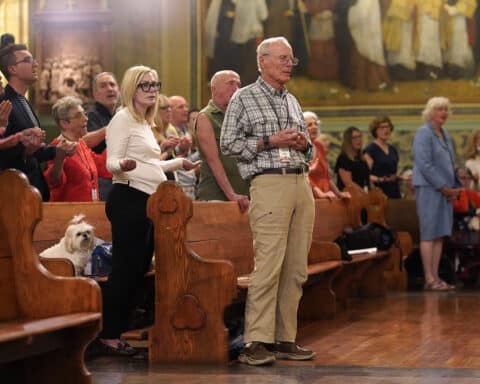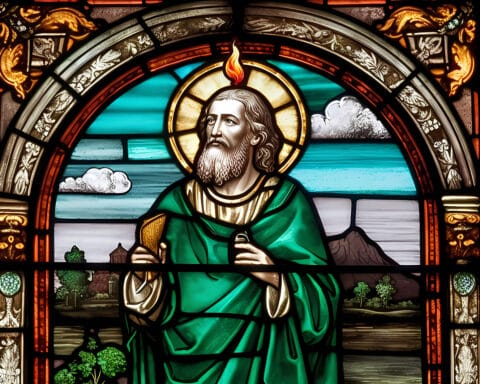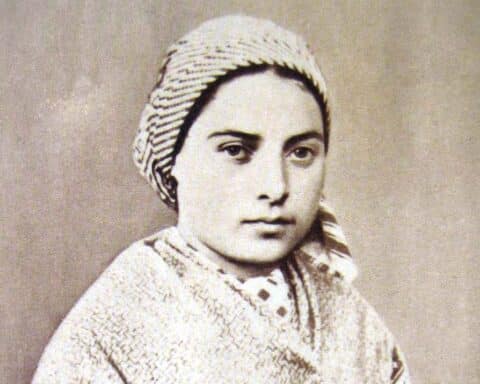On May 15, for the first time since October 2019, because of the COVID-19 pandemic, St. Peter’s Square will host a canonization. This gap of two-and-a-half years (canonizations at the Vatican under Pope Francis typically happened at least once a year) was punctuated only by the pontiff in 2021 when he named Italian Third Order Dominican Margaret of Castello, patroness of persons with disabilities, a saint by way of the process known as equivalent canonization.
And so, the upcoming canonizations to be declared by Pope Francis is a rather historic occasion — and a joyful one, both in the wake of the difficulties of the pandemic and, now, in the midst of war in Ukraine. Ten saints will be declared, which will bring the total of 909 saints canonized in the pontificate of Pope Francis. The group of new saints is comprised mostly of priests and women religious, including just one member of the secular lay faithful.
1. St. César de Bus
(1544-1607)
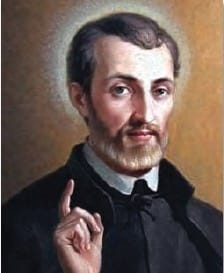
In his youth, César de Bus was regarded by some as the life of the party. But, when faced with a serious illness, César was drawn to a deeper spiritual life. Resolved to become a priest, he was ordained in 1582 and was consumed by a desire to catechize ordinary Catholics. César considered the overwhelming lack of catechesis within the Church as both a scandal and detriment to the Church’s life and mission. Inspired by the catechetical zeal and holy life of contemporary reformer St. Charles Borromeo, César contributed to the reforms initiated by the Council of Trent (1545-63) by catechizing the faithful in forgotten, marginalized outposts in France. He brought others into his mission and began to cast its nets wider. He formed a society of like-minded priests committed to catechizing the faithful and also founded a counterpart women’s congregation. For his foresight, innovation and missionary zeal, César is remembered as one of the Church’s best catechists.
2. St. Devasahayam Pillai
(1712-52)
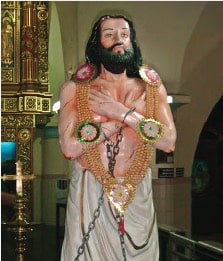
Set to become the first Indian layman to be canonized, Neelakanda Pillai grew up in an affluent family and was raised in the Hindu religion. As a young man, he joined the service of the Travancore royal family in southern India, eventually being given responsibilities for the affairs of state. A Dutch naval commander — a man defeated by the Travancore military, imprisoned, then pardoned on the condition that he join Travancore forces — brought Neelakanda to the Faith. At the time of his subsequent baptism, he took the name Devasahayam, meaning Lazarus. His wife and other family members followed him into the Church. Many in the kingdom turned on Devasahayam and later brought false charges of treason against him, which resulted in imprisonment and three years of harsh torture. Sentenced to death, Devasahayam suffered a barbaric martyrdom. Despite resistance from within the Hindu community — which cited there are no extant records of official religious persecution in Travancore — ecclesiastical archives show conversion of palace officials was considered intolerable. This cleared the way for Devasahayam to be declared a martyr in 2012.
| The Saint of the Pandemic |
|---|
|
|
3. St. Anne-Marie Rivier
(1768-1838)
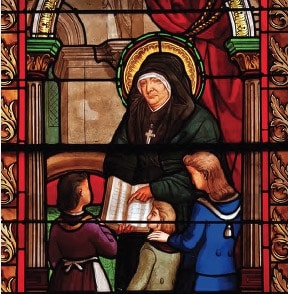
Despite standing at only 4-feet-4-inches as an adult, the result of broken bones in a childhood accident, St. Anne-Marie was a missionary tour-de-force, called the “female apostle” by Blessed Pope Pius IX for “her spirit is solidly theological and clearly apostolic.” Rejected from a convent due to poor health, Anne-Marie operated her own school for a time. After the French Revolution closed all religious congregations and their institutions, Anne-Marie secured possession of a closed convent school. In the attic of that building, on Nov. 21, 1796, she dedicated her life to God with five other women. A new congregation, the Sisters of the Presentation of Mary, was born. Anne-Marie’s sisters took up the educational apostolate, particularly attentive to the needs of orphans, as well as pastoral care to the homebound. The congregation set up many apostolates in the United States, including the Catholic liberal education college that is now known as Rivier University in Nashua, New Hampshire.
4. St. Luigi Maria Palazzolo
(1827-86)
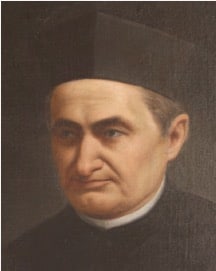
A priest of the Italian diocese of Bergamo, St. Luigi Maria was beatified by another one-time priest of the same diocese, Pope St. John XXIII. The youngest of eight boys, St. Luigi Maria’s early life brought various difficulties, including his father’s death when he was 10 years old. This experience no doubt made his heart ache for children without parents, to whom he dedicated much of his life’s work. Luigi Maria established a number of orphanages, including the Little House of Divine Providence and the Work of St. Dorothy to care for abandoned girls. And with the help of Venerable Maria Teresa Gabrieli, Luigi Maria established the Sisters of the Poor (Palazzolo Institute). St. Luigi Maria’s life was defined by a commitment to give of himself in whatever capacity was needed to help others have a better life. He died repeating “Jesus Christ,” whom he served so faithfully among the poor and forgotten.
5. St. Maria Francesca Rubatto
(1844-1904)
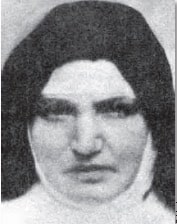
Born in Italy, Maria Francesca lost her father when she was just 4 years old and received a marriage proposal as a teenager. She turned down the young suitor and made a vow of virginity. In Turin, she was supported by a well-to-do woman in her efforts to teach the Faith, care for the poor and visit the sick. When she sprang to action on the street one day to help a worker injured while building a convent in Loano, Italy, the fledgling congregation looking for a leader knew God was providing for them in St. Maria Francesca. She was convinced to join the group and was appointed their superior by the local bishop after she professed vows in 1885. Her vocation brought her across the globe to South America, where she helped solidify the foundation of the community now known as the Capuchin Sisters of Mother Rubatto. It was in Uruguay’s capital Montevideo, where she spent over a decade of her last years, that St. Maria Francesca died of cancer.
6. St. Charles de Foucauld
(1858-1916)
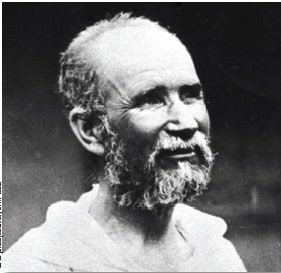
Born into French nobility at Strasbourg, France, St. Charles de Foucauld was orphaned by the age of 6. At first his paternal grandmother was given charge of him and his sister, and after their death they were raised by his maternal grandparents. His maternal grandfather — a colonel remembered as a loving father-figure — left a strong impression on the young St. Charles. As an adult, the future saint recalled his admiration for his grandfather’s intelligence and his “infinite tenderness” that filled his childhood with “an atmosphere of love.” His family’s wealth meant his education — which helped to remedy his quick-temper and introversion — could continue despite bouts of sickliness.
In the later years of his education, St. Charles retreated more and more from the Faith toward agnostic tendencies. He resolved to abandon all practices of religion during his time of study in preparation for military academy, resenting the strict religious practices in force at his Parisian boarding school. Following a rather abysmal performance at the military academy, St. Charles was nonetheless admitted to the French cavalry. After a tour of service in Algeria, he was lured away again to the life of a socialite, made possible thanks to a sizable inheritance received after his grandfather’s death. During this period, he committed himself seriously to the study of Algerian and Moroccan geography and culture.
An intensification of his faith life ensued and St. Charles took up a monastic calling in 1890, which would lead him along just as many uncertain paths as it did give him opportunities to abandon himself to God’s will. He entered a Trappist monastery in France, then transferred to another in Turkey, then spent time at others in Algeria and Rome. In 1896, he asked to be dispensed from the Trappists altogether, finding himself less than fulfilled. “I love our Lord Jesus Christ and I cannot bear to lead a life other than his. I do not want to travel through life first class when the One that I love went in the lowest class,” he wrote. Believing that Trappist life made it impossible “to live here the life of poverty, hiddenness and abjection … of Our Lord at Nazareth,” he moved to Nazareth to take up a period of unstructured religious life. There he worked as a handyman for a Poor Clare monastery.
St. Charles was encouraged to become a priest and was ordained in France in 1901 — just before he took up the life of a hermit in Saharan Algeria, where he set up a small hermitage for prayer and hospitality. There he received many visitors ranging from slaves to pilgrims. His hope had been to establish a new religious congregation there, in his words: “a little family imitating so perfectly the virtues of Jesus that all who live in the surrounding area begin to love Jesus!” But no one sought to join him.
In 1903, he volunteered to serve as a priest among indigenous peoples in the desert of Northern Africa, desiring that “all people go to heaven!” For more than a decade he committed himself to the study of Tuareg language and culture. His goal: “to carry the Gospel to the most abandoned … not by preaching it but by living it.” Or, as he described his mission elsewhere: “My apostolate must be the apostolate of goodness. If someone were to ask why I am gentle and good, I must say, ‘because I am the servant of someone who is far better than me.'” Before his death, St. Charles produced a book of grammar, a dictionary, and he translated lengthy collections of poetry and literature. He regarded it “a great consolation” that the first written book in Tuareg was his translation of the Gospels.
Amid a famine from 1907-08, St. Charles experienced something of a physical, spiritual and psychological “dark night.” During this time, and before the First World War, St. Charles took various trips back to France. During one such visit, he wrote the statutes for the Association of the Brothers and Sisters of the Sacred Heart of Jesus, which consisted at the time of his death of about 50 like-minded lay and ordained French Catholics. Despite his best efforts, a decade into his time there, St. Charles had not made a single convert. He wrote, after a decade of celebrating Mass in his hermitage there: “not a single conversion! It takes prayer, work and patience.” In the face of rejection, apparent failure and isolation, he was committed to his mission. “I will stay here, the only European … very happy to be alone with Jesus, alone for Jesus,” he wrote.
On Dec. 1, 1916, St. Charles was dragged from his hermitage by local marauders. Although only intending to kidnap him at first, the raiders ended up shooting him in the head when encountering French cavalrymen, whom they also killed. After his death — considered at the time to be martyrdom, yet only declared officially so by the Church in 2005 — Charles’ own spiritual legacy has inspired nearly 20 religious and secular institutes and associations of the faithful. By God’s grace, St. Charles has bequeathed an incredible endowment to the Church, despite what seemed to be repeated failures in the endeavors he undertook. The seed planted when his body was buried in the Saharan sands had borne great fruit.
7. St. Carolina Santocanale
(1852-1923)
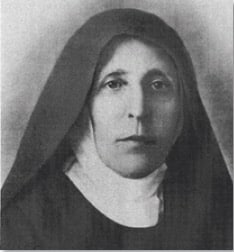
After an extended, serious illness, Sicilian St. Carolina decided to combine her interest in both contemplative and active apostolates of religious life by becoming a Secular Franciscan. Professing vows in 1887, and taking the Franciscan habit, St. Carolina took the name “Maria of Jesus.” Despite opposition from her family, the saint, who became well-known for her backpack filled with supplies, made her way from door to door in Palermo tending to the needs of the poor and sick. As others began to join in her mission, St. Carolina founded the Capuchin Sisters of the Immaculate of Lourdes in 1909. The congregation received formal ecclesiastical approval just a week before Carolina died in 1923.
8. St. Maria Domenica Mantovani
(1862-1934)
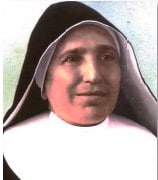
St. Maria Domenica grew up in a pious home, where she was encouraged by her parents to enter religious life. Under the direction of her parish priest, Blessed Giuseppe Nascimbeni, Maria Domenica dedicated herself to the needs of catechesis and care for the sick. In 1886, she made a private vow of chastity, relying on the Blessed Mother’s guidance to make clear a path to more formally live her vocation. In 1892, St. Maria Domenica, with Blessed Giuseppe, became a co-foundress of the Little Sisters of the Holy Family, professing vows with four others. Despite only three years of formal education, St. Maria Domenica’s deep interior life served as the foundation for her four decades of service as the nascent congregation’s first superior.
9. St. Titus Brandsma
(1881-1942)
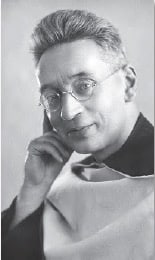
St. Titus grew up on a dairy farm in the Netherlands, in a vicinity where Catholicism is a minority religion. But the disadvantages that came from growing up as a member of a religious minority were a far cry from the total persecution that, in Titus’ lifetime, would be launched by the Nazis. After being ordained a Carmelite priest in 1905, Titus was immersed in academia as a philosophy professor and an expert in mysticism. He also worked in journalism. After he undertook a speaking tour of Carmelite institutions in the United States and Canada in 1935, St. Titus returned to his native Netherlands, where he came under scrutiny of the Third Reich for his outspoken defense of journalistic freedom, particularly after their invasion of his country in 1940. In 1942, St. Titus took on the role of emissary on behalf of the Dutch bishops, sharing their request that Catholic newspapers not collaborate with the Nazis in any form. His arrest and imprisonment followed, and he was eventually brought to the Dachau concentration camp that summer. Titus died there on July 26, 1942, the result of an SS nurse’s experimental injection.
10. St. Justin Russolillo
(1891-1955)
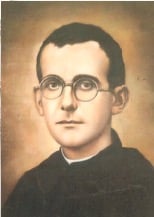
The most contemporary of the Church’s newest canonized saints, Justin was committed to the work of fostering vocations to the priesthood and religious life, while enduring many difficulties, sufferings and hardships. After being ordained in 1913, Justin established, within a few years, “Vocationist” men’s and women’s communities to carry out this important work in the life of the Church, being particularly attentive to supporting such vocations among the poor and underprivileged. St. Justin also established a third order, or secular institute, for laity to promote the universal call to holiness through union with the Sacred Heart of Jesus. In that manner, he was a forerunner of a similar emphasis of the Second Vatican Council. He was born and served as pastor in the same town near Genoa, Italy, where he also died of leukemia in 1955. St. Justin’s Vocationist communities serve throughout the world, including in the United States, mostly along the East coast.
Michael R. Heinlein is editor of OSV’s Simply Catholic. He writes from Indiana.
| ‘Prayer of Abandonment’ |
|---|
|
St. Charles de Foucauld found himself unsettled in his vocation at times, yearning to give the Lord more, to become more like Christ in all he did. And what he wanted to do for the Lord often amounted to little. But throughout all his frustrations, struggles and disappointments, St. Charles abandoned himself to God’s will and trusted in God’s plans. While not exactly as he composed it as part of a larger prayer in 1896, this “Prayer of Abandonment” is key to his spiritual legacy and is recited by his spiritual sons and daughters throughout the world. He wrote it as a means to join our prayer with Christ’s own from the cross: “Father, into Your hands I commend my spirit” (Lk 23:46). He wrote, “This is the last prayer of our Master, of our Beloved … may it be ours. … And may it not only be that of our last moment, but of all our moments.” Father, Whatever you may do, I am ready for all, I accept all. Into your hands I commend my soul; |

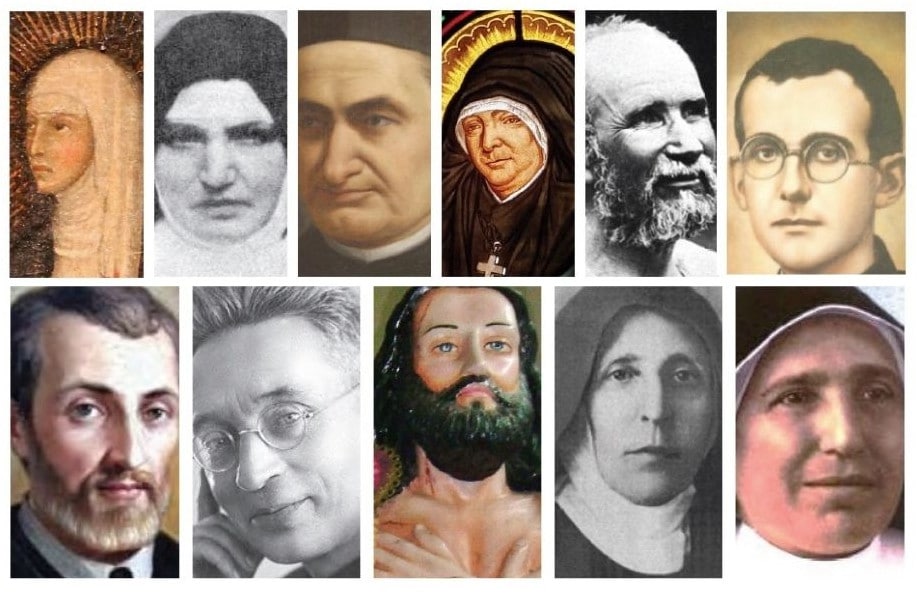
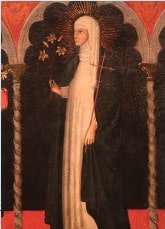 Through an equivalent, or equipollent, canonization — meaning without the ordinary juridical process of declaring a saint, including the necessary second miracle — Pope Francis
Through an equivalent, or equipollent, canonization — meaning without the ordinary juridical process of declaring a saint, including the necessary second miracle — Pope Francis 